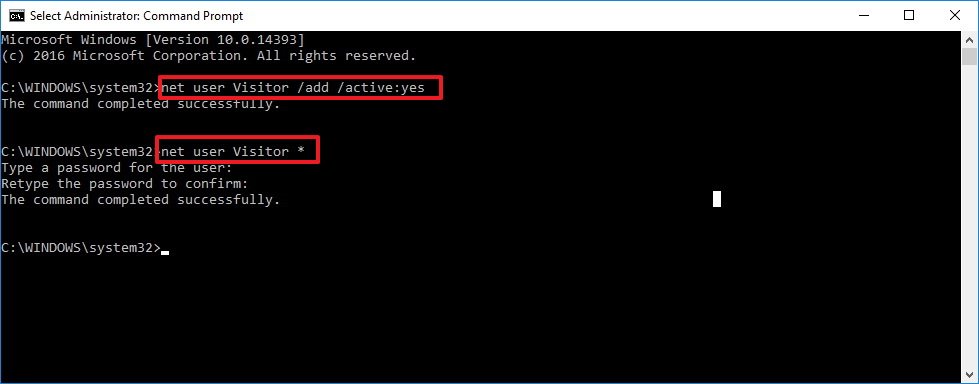How to set up a guest account on Windows 10
Windows 10 no longer offers a Guest account to share your PC, but you can create a restricted account to emulate that kind of functionality.

The concept of a guest account isn't a bad one: a locked-down account that you can let other people use on your PC to access the internet, run apps, and not much more — all while keeping your files, settings, and everything else safe (in theory). But when Microsoft rolled out Windows 10, the Guest account disappeared.
You can enable it in a number of ways, but there's no Guest account to use. In fact, if you manage to turn on the account, it won't even show up on the sign-in screen.
However, the elements needed to create a guest account are still present in Windows 10, which makes it possible to create your very own restricted account to let guests use your PC. It just take a bit of user assembly.
In this Windows 10 guide, we'll walk you through the steps to use Command Prompt to create a guest account on your PC.
How to create a guest account
- Open Start.
- Search for Command Prompt.
- Right-click the result and select Run as administrator.
- Type the following command to create a new account and press Enter:
net user Visitor /add /active:yesKeep in mind that we're using the Visitor as the name of the account, because Guest is a reserved name on Windows 10 and you can't use it. However, you're free to name the account anything you like. Just keep it short, you don't want to go crazy on the name. - Type the following command to create a password for the newly created account and press Enter:
net user Visitor * - You don't need a password for this account, as such simply press Enter twice to create an empty password.
- Type the following command to remove the new user account from the default Users group and press Enter:
net localgroup users Visitor /delete - Type the following command to add the new user account to the Guests user group and press Enter:
net localgroup guests Visitor /add - Close Command Prompt to complete the task.
Using the steps mentioned above, you're creating a traditional standard account, but removing it from the Users and adding it to the Guests user group is what gives the account all the same permissions you would find in the old Guest account.
Once you completed the steps, you only need to sign out of your current account, and in the Sign in screen, select the Visitor account and click the Sign in button — no password required.
Now with the new restricted account created, you can now safely share your computer with guests. They will be able to access the internet and use certain applications, but they won't be able to change settings, install programs, and or access your files.
All the latest news, reviews, and guides for Windows and Xbox diehards.
If you no longer need the account, you can go to Settings > Accounts > Family & other people, select the Visitor account and click the Remove button to delete the account.
Do you think Microsoft should bring back the original Guest account to Windows 10? Tell us in the comments below.
More Windows 10 resources
For more help articles, coverage, and answers on Windows 10, you can visit the following resources:
- Windows 10 on Windows Central – All you need to know
- Windows 10 help, tips, and tricks
- Windows 10 forums on Windows Central

Mauro Huculak has been a Windows How-To Expert contributor for WindowsCentral.com for nearly a decade and has over 22 years of combined experience in IT and technical writing. He holds various professional certifications from Microsoft, Cisco, VMware, and CompTIA and has been recognized as a Microsoft MVP for many years.



